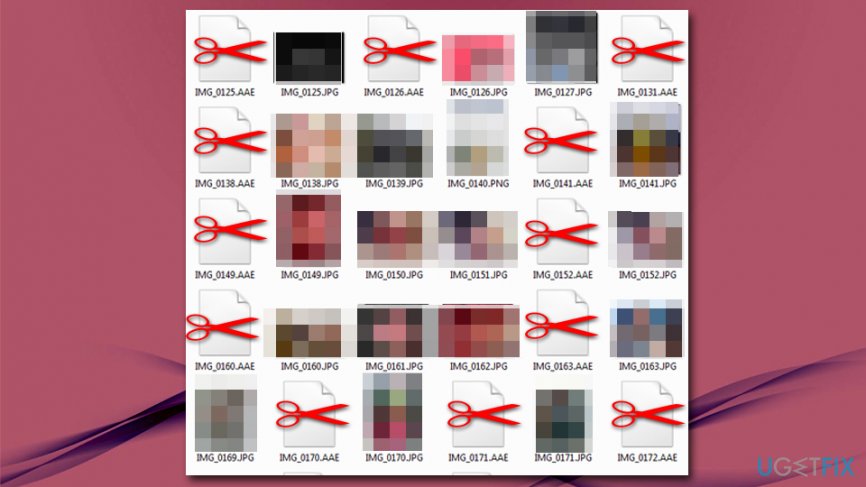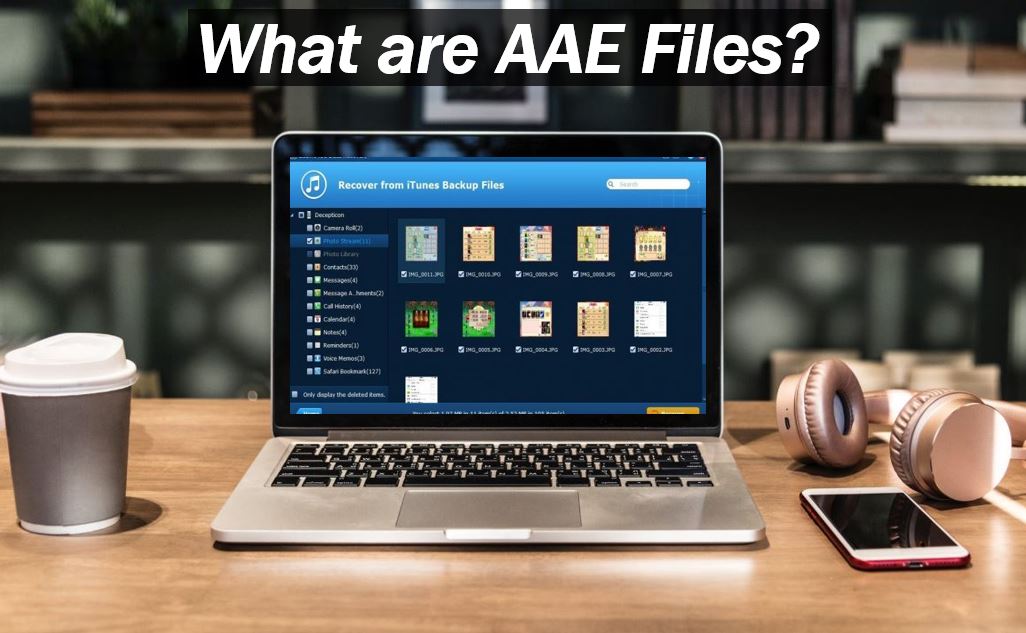You don’t need to be tech savvy to notice the AAE files on your Apple Mac, iPhone, or Windows. You may have run into them while scrolling through the photo libraries, since the. AAE extension is quite easy to notice.
I tried to import the AAE files to see what they look like, but had no luck doing so. On my Mac with Mavericks, they don't show up in Image Capture, and on a Windows PC I can see the AAE files, but I get errors trying to copy them. It appears that if I upgrade my Mac to Yosemite, then Image Capture will be able to read the AAE files.
Where would you notice an AAE file?
- The aae file extension is exclusively related to a special 'sidecar' file generated by the Apple Photos app included in macOS and iOS devices. AAE format is XML based format that contains all the edits and adjustments made on a particular digital photograph (.
- Aae File Viewer free download - Large Text File Viewer, File Viewer Plus, FastStone Image Viewer, and many more programs.
- Aae File Converter free download - All File to All File Converter 3000, File Shredder, Any Video Converter, and many more programs.
The AAE files belong to Apple devices and machines, more accurately to iOS 8 and above. You can also notice them on Mac OS 10.10 and later. When you’re transferring the AAE files to your Windows computer, the files may look like regular JPEG, without including the edits.
Did you ever notice an AAE File?
If it were to judge by their name, the files resemble the image files a lot (for instance, IMG_1357.AAE), but you may not be successful when trying to open them. An error message is going to inform you that they’re not valid image files.
When you’re in Windows, the message is going to be “Windows cannot open this file,” recommending you to look in the web for something else to open it with. Besides, the files may also exist on a computer running Mac or Windows as operating systems.
It’s confusing for a Window user since we all know that Windows typically hides the extension (by default). More often than not, the AAE file is going to appear just like any other IMG_1357 with a standard blank icon.

Any iPhone or Mac user has been editing pictures for some time now (we’re positive you did). You may have noticed that the edited files (using the Photos app) look unedited after you transfer them from the iPhone to software program/computer on the Apple Mac. Isn’t it weird?
It’s also common for people to identify the.AAE extensions when trying to find a specific photo and applying the type (or another choice) criteria in finder.
What’s the concise description of AAE files?
Long story short, Apple Photos application has created the AAE files (XML-based format), storing information about the changes that were made to a specific file. The files are additional, and they let the original files stay unchanged when you decide to turn the photos into their original state.

Should you ever delete AAE files (scroll down for the details), you’re only going to lose the changes that you’ve made to a photo/image through the Photos application.
Why do we have AAE files?
Briefly, when you’re editing in the Photos App from iPhone (iOS 8 and above), you’re not going to alter the original image file. Back in the day, when you edited a file, you were also over-writing the original.
However, in the case of iOS8 and above, the original photograph will remain the same, saving the edit instructions in a different file. It’s the AAE file we’ve been talking about (it’s also known as “AAE sidecar file”).
You will see the AAE file in the same folder as the original photo, having the same name format. However, the file doesn’t come with the standard.JPG, but it ends in AAE file extension. For instance, an edited IMG_3137.JPG is also going to have another filer, named IMG_3137.AAE. It’s the main reason for which you may feel like the AAE files are kind of random as they only show when you’re editing an image file.
Is there something you can do with AAE files?
What’s the use of AAE files? The moment you’re done with editing on the iOS device, the most straightforward thing to do is to email the completed photo to yourself. This step is going to end the edits on the picture.
You may also post your photo on social media (Instagram, Facebook, or anything similar), even if the quality of the image is going to suffer on some level.
Let’s remind you once again that, from this moment forward, the files have no use on Android devices or Windows. We are expecting new ways of using the files later within the future, and it may take a while until that happens.
You can delete the files if that’s what you want. You can also save the files, especially if you’re hoping to use them in some other way one day since the files are tiny and don’t take up drive space.
Is it a good thing or not for the AAE files to exist?
Is it a step forward or backward for Apple for creating the AAE files? Even if we appreciate that the original photo isn’t overwritten automatically anymore, some beg to differ. On some level, it’s easier to be asked if we’re going to like overwrite the file or save it separately. We think that you can save space and eliminate the confusion too.
What’s the easiest way to transfer photos to the current changes?
When you’re transferring altered photos from your iPhone to the Mac computer that runs on OS X (and above), you shouldn’t have to deal with any problems. The situation is a bit different in the case of Windows and earlier Mac OS versions (pre-OS X Yosemite is just one to name). In this case, the file with changes is going to stay on the iPhone. Even if you manage to move that specific file manually, you may not be able to open it. You don’t have the default apps for opening it.
You may solve the problem by looking for third-party software that is capable of reading the AAE file format. When you’re not a Mac OS user, finding the software for opening the alteration list file isn’t going to be a breeze. You may have a better shot at it by forcing the iPhone to make the changes to the original file or to export the changed copy.
Sending an email with the attached photo right back at you, from an iPhone is the most natural solution (remember that the image is altered already) We’ve previously mentioned the solution! Another solution is loading the edited version on social media, but you’re going to sacrifice the quality of the image.
Last but not least, you can also save the photo onto cloud storage (iCloud or anything similar). The new Apple devices include an AirDrop function, with many of the users having difficulties while using the feature.
Should you delete or store the AAE files?
You may have checked the tech support forums a couple of times until now. As you can see, you’re not the only one unable to decide whether you should keep or delete your AAE files. It’s because you still don’t know what to do with the AAE files.
Go back to the top and read our suggestions once again. It’s obvious that when you delete the files on your Window computer, you’re not going to cause negative results. You simply don’t have a default software to open the files.
Bear in mind that you’re also going to lose the link between the original file and the file with changes list when you rename the original file. You may also rename the AAE file manually. Therefore, if you rename the photos that have been changed, you may forget the precise name of the image completely, rending the files to become useless and unimportant. In a nutshell, when you delete the AAE files, your photos aren’t going to be altered in any way. But do you want to delete them knowing that they only take a few KB of storage? What if you’re going to be able to use them in a couple of years?
Resources
Topics Map > Technical Support > Remote Access > File Server
Instructions for connecting to the AAE File Server for Mac clients
Please note: If you are computer is not part of the WIRED Taylor Hall network, you will need to Setup/Connect Campus VPN BEFORE doing the steps below.
Aae Files Can You Delete Them
- Make the Finder active by either click on your desktop or the Finder icon in the dock.
- Click Go in the menu and select Connect to Server.
- In the Connect to Server dialog box, enter in the location you wish to connect to. If you would like to save it for subsequent use in your favorites list, click the '+' after entering in the address. Typically, the address used for the AAE file server is: smb://files.aae.wisc.edu/aae
Within that share, you will find the following subfolders:- groups - location for most projects and group shares
- dept - location for adminstrative department files
- temp - location for community file sharing
- users/<yourCampusNetID> - your personal private files
If you are working with a PI using ResearchDrive, that address is smb://research.drive.wisc.edu/<PI-NetID> - Click Connect.
- Enter your Campus NetID and password into the dialog box. Be sure to use the form AD<CampusNetID>
- Click Connect.
See Also:
Aae Files How To Open
| Keywords: | files;mac;file server map winSuggest keywords | Doc ID: | 81246 |
|---|---|---|---|
| Owner: | Eric D. | Group: | Agricultural & Applied Economics |
| Created: | 2018-03-30 12:05 CST | Updated: | 2020-09-29 11:48 CST |
| Sites: | Agricultural & Applied Economics | ||
| CleanURL: | https://kb.wisc.edu/aae/files-mac | ||
| Feedback: | 00CommentSuggest a new document | ||
